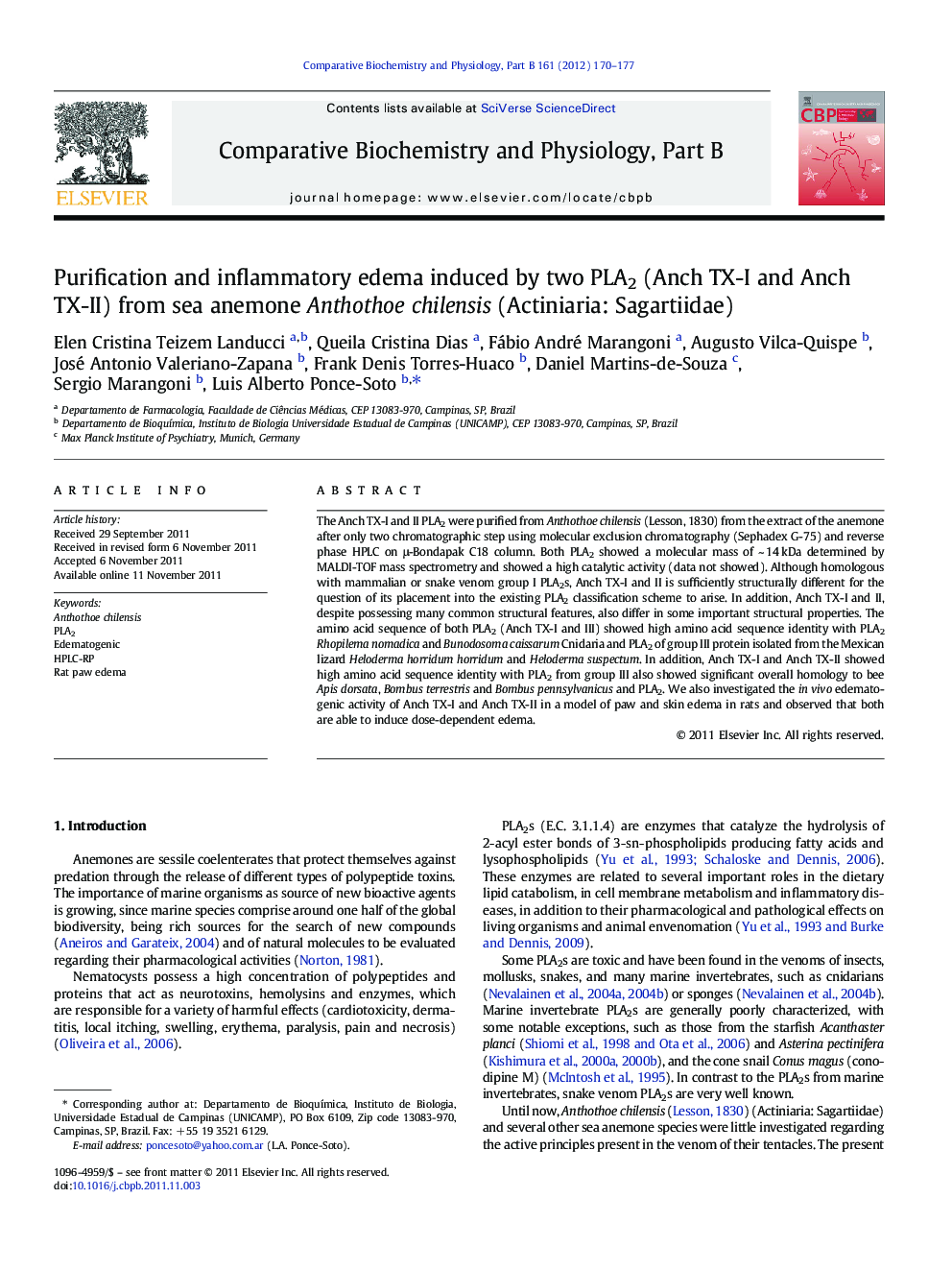| Article ID | Journal | Published Year | Pages | File Type |
|---|---|---|---|---|
| 1975600 | Comparative Biochemistry and Physiology Part B: Biochemistry and Molecular Biology | 2012 | 8 Pages |
Abstract
The Anch TX-I and II PLA2 were purified from Anthothoe chilensis (Lesson, 1830) from the extract of the anemone after only two chromatographic step using molecular exclusion chromatography (Sephadex G-75) and reverse phase HPLC on μ-Bondapak C18 column. Both PLA2 showed a molecular mass of ~ 14 kDa determined by MALDI-TOF mass spectrometry and showed a high catalytic activity (data not showed). Although homologous with mammalian or snake venom group I PLA2s, Anch TX-I and II is sufficiently structurally different for the question of its placement into the existing PLA2 classification scheme to arise. In addition, Anch TX-I and II, despite possessing many common structural features, also differ in some important structural properties. The amino acid sequence of both PLA2 (Anch TX-I and III) showed high amino acid sequence identity with PLA2Rhopilema nomadica and Bunodosoma caissarum Cnidaria and PLA2 of group III protein isolated from the Mexican lizard Heloderma horridum horridum and Heloderma suspectum. In addition, Anch TX-I and Anch TX-II showed high amino acid sequence identity with PLA2 from group III also showed significant overall homology to bee Apis dorsata, Bombus terrestris and Bombus pennsylvanicus and PLA2. We also investigated the in vivo edematogenic activity of Anch TX-I and Anch TX-II in a model of paw and skin edema in rats and observed that both are able to induce dose-dependent edema.
Keywords
Related Topics
Life Sciences
Biochemistry, Genetics and Molecular Biology
Biochemistry
Authors
Elen Cristina Teizem Landucci, Queila Cristina Dias, Fábio André Marangoni, Augusto Vilca-Quispe, José Antonio Valeriano-Zapana, Frank Denis Torres-Huaco, Daniel Martins-de-Souza, Sergio Marangoni, Luis Alberto Ponce-Soto,
